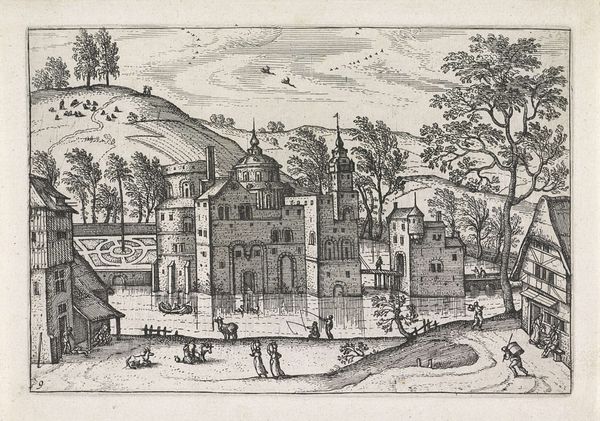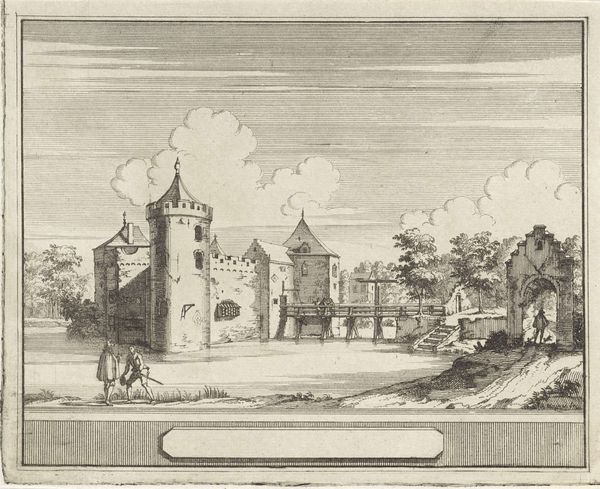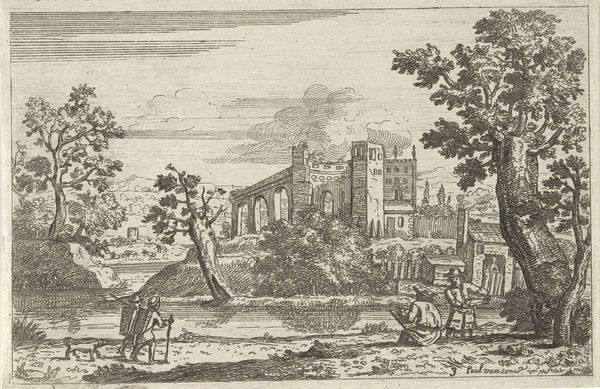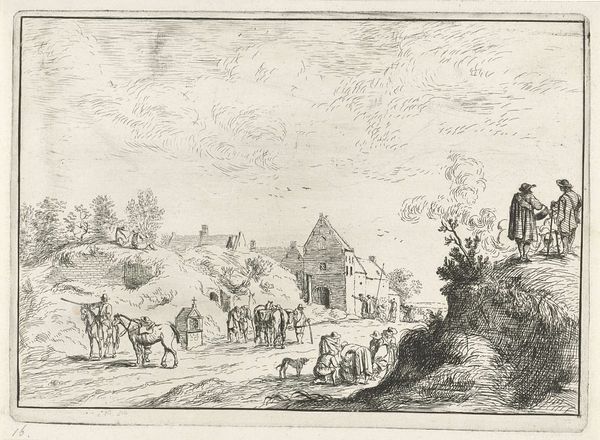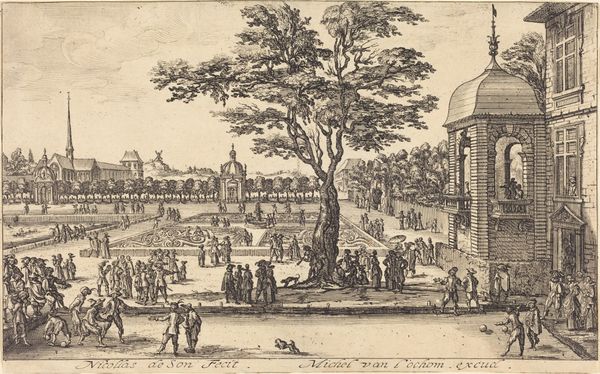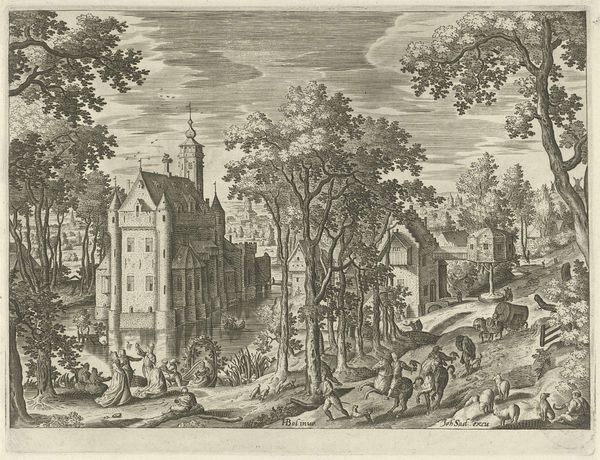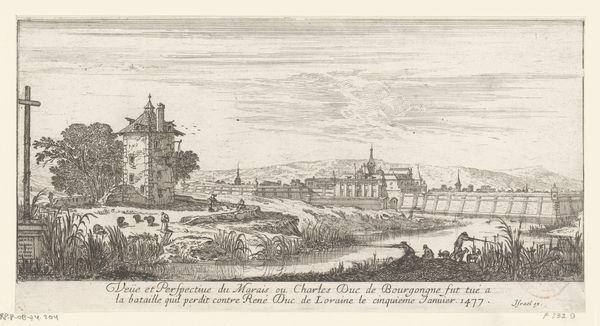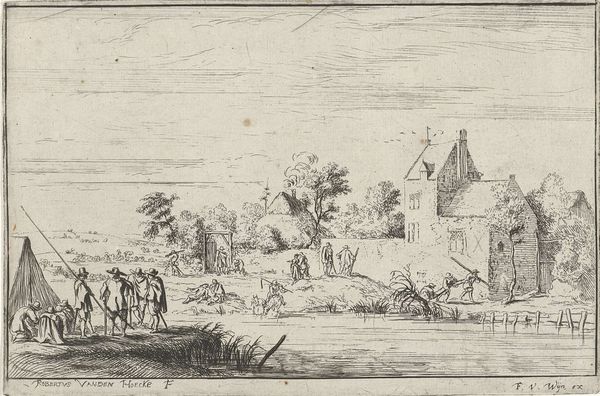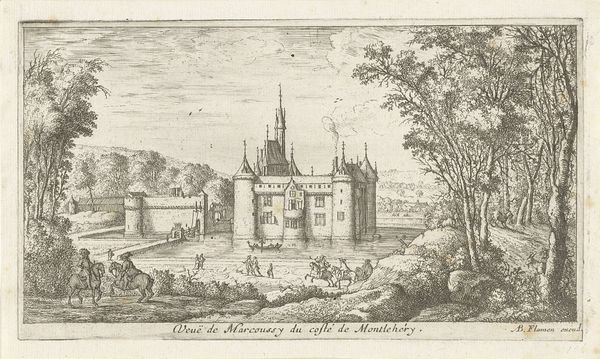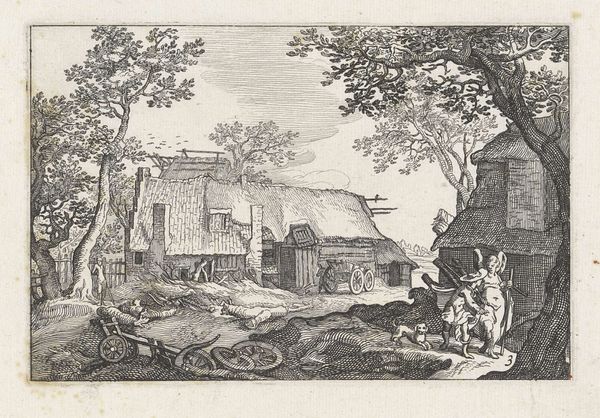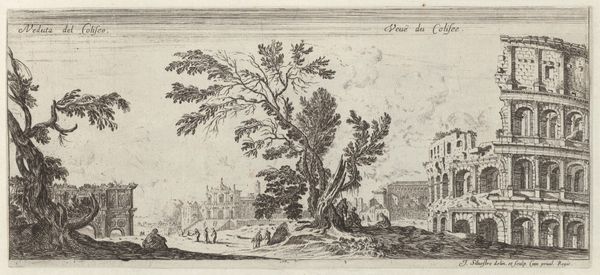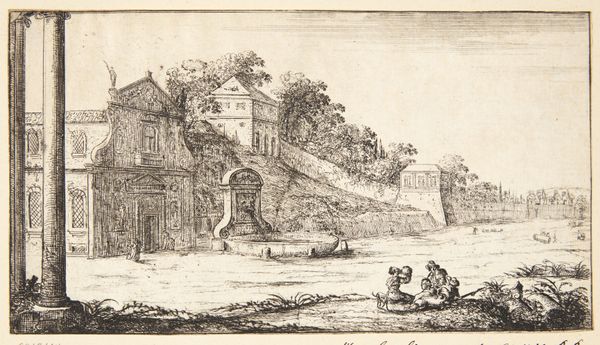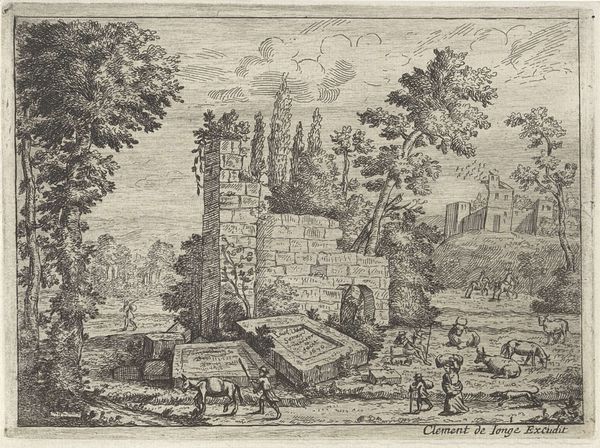
print, etching
#
medieval
#
baroque
# print
#
etching
#
landscape
#
figuration
#
line
#
history-painting
#
realism
Dimensions: 109 mm (height) x 216 mm (width) (bladmaal)
Editor: So, here we have Albert Flamen's "Vej ved slottet Peray nær Corbeil", an etching from between 1620 and 1669. It depicts a sprawling estate, complete with villagers, animals, and rather imposing architecture. There's a lot of activity here, but the style feels quite formal. What do you make of this piece? Curator: What I see is not just a landscape, but a tableau ripe with societal commentary. The rigid lines and detailed figuration are tools used to construct and reinforce the hierarchy of the time. Do you notice how the estate is elevated, literally and figuratively, above the villagers? Editor: I do now that you mention it. It’s subtle, but clear. Is that intentional on the artist’s part, or just a reflection of the period? Curator: It's both. Flamen is visually documenting the status quo. The architecture isn't merely background; it represents power, wealth, and control. Notice the contrast between the meticulously rendered estate and the more loosely depicted figures in the foreground. What might that signify? Editor: Inequality? Or perhaps the everyday lives of the working class weren't considered as important and hence, are not as sharply in focus. Curator: Exactly. And that perspective, embedded in the artistic choices, tells us a great deal about the social landscape and the artist’s role within it. The animals too. Even the goats milling in the front almost appear as some staged bucolic display reinforcing the landowners claim on their terrain. Editor: It's unsettling how relevant these power dynamics still are. It's more than just a pretty landscape. It has layers reflecting society at the time and perhaps beyond. Curator: Precisely! Seeing art as a product of its socio-political context, is key to understanding it, not just as a beautiful thing, but as an agent within historical narratives of power. Editor: This has definitely shifted my view. It’s about seeing art as an active participant in these conversations, rather than just a passive reflection. Thanks.
Comments
No comments
Be the first to comment and join the conversation on the ultimate creative platform.

